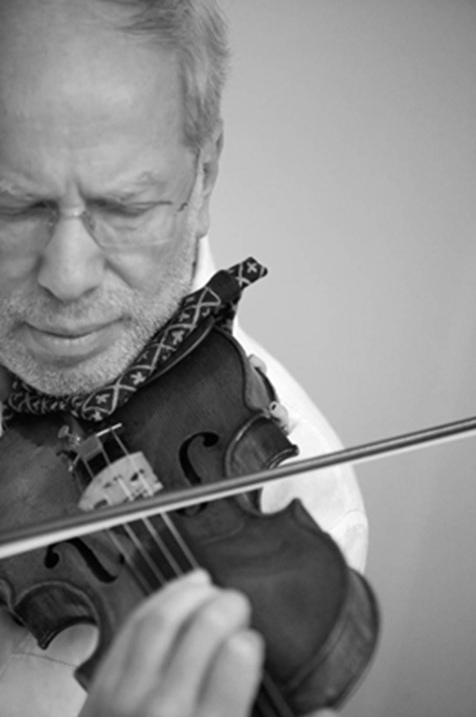A violin lion in winter partners with a brilliant young colleague at Carnegie Hall
It’s hard to imagine a more quintessential master-student pairing than Gidon Kremer and Daniil Trifonov. There are more than forty-four years separating the elder statesman of the violin from the world’s newest piano virtuoso. It’s no surprise that the house was packed for their joint recital at Carnegie Hall on Friday.
At this point in his career, even though his musical intelligence is still obvious in his playing, Kremer’s technical powers are more limited. Here and there on Friday he was able to muster a warm tone, but for the most part, he sounded anemic, his vibrato weak and his intonation unsure. Trifonov spent much of the night doing his best just not to cover the violinist.
This was especially apparent on the first half of the program–Trifonov emerged alone (an odd way to begin a joint recital, to be sure) and tossed off a level-headed, sparklingly clear Mozart Fantasia (K. 397). Trifonov, it turns out, is not just a great soloist, but a first-rate recital partner as well–he graciously took a back seat when playing with Kremer, first in Mieczysław Weinberg’s Sonata No. 5. He is as fierce a partner as he is a soloist, but he restrained his ferocity, reining in his temperament in the Allegro molto to accommodate Kremer, who was not quite as agile.
Mozart’s E-flat Major Sonata (K. 481) displayed similar problems. While Kremer showed in the Adagio that he could be a gracious accompanist, he had trouble in the first movement finding Mozart’s characteristic ease and grace, his playing feeling overly encumbered; while he did have moments of caramel-sweet tone, Kremer couldn’t sustain it. It didn’t help that the transition from Weinberg to Mozart was jarring.
All was forgiven after Kremer’s performance of Weinberg’s Solo Sonata No. 3. It’s a peculiarity of music history that, after Bach completed the last of his peerless Sonatas and Partitas for Solo Violin in 1720, the sonata for solo violin faded into history for two centuries. None of the great Classical or Romantic composers tried their hands at the form, and then, suddenly, in the early twentieth century, it was rediscovered with a slew of magnificent entries by Ysaÿe, Bartók, Hindemith, Prokofiev, and others.
Kremer wants Weinberg’s sonatas to be included in that august company, and he made a convincing case for the Third on Friday. Like most of the other twentieth-century solo sonatas, this is a dark, fiercely expressive piece, calling for a virtuosity that, based on the program, one would not have expected from Kremer. But his vigor was remarkable, showing an admirable facility that many younger violinists would kill for.
It was an odd choice for Kremer to include a 7-part program in the printed booklet, dividing the piece into segments when, if anything, his performance made the single-movement, twenty-minute piece seem one continuous, riveting narrative. His range of colors and characters–silvery, haunting, furious, desperate, wandering–was everything that you’d expect from a master of the violin.
Schubert’s Fantasia in C Major, the last scheduled piece, was a return to the struggles of before–Trifonov created rippling waves and prismatic colors, and Kremer couldn’t muster enough gusto to keep up. It almost didn’t matter–when the Schubert finished, it was the Weinberg solo sonata that was still ringing in our ears, and that earned a reverent ovation from the audience.
They poured on the charm in two encores, first Mozart’s Sonata in C Major (K. 404), souped up with cheeky quotations from Beethoven’s Violin Concerto and other favorites. The second, a giddily limping performance of Giya Kancheli’s Rag-Gidon-Time.

